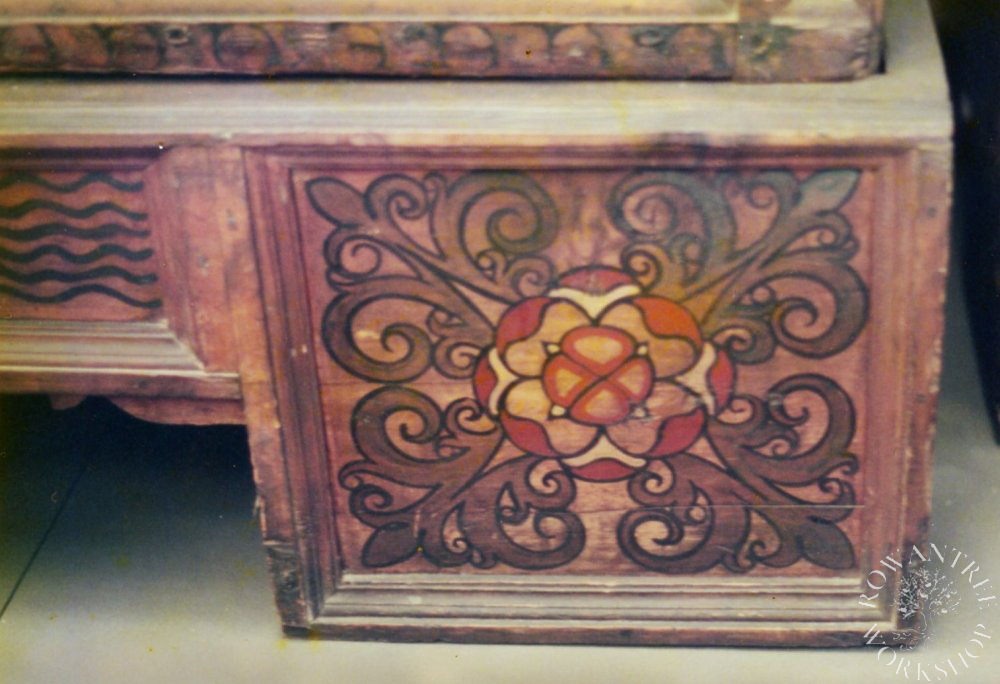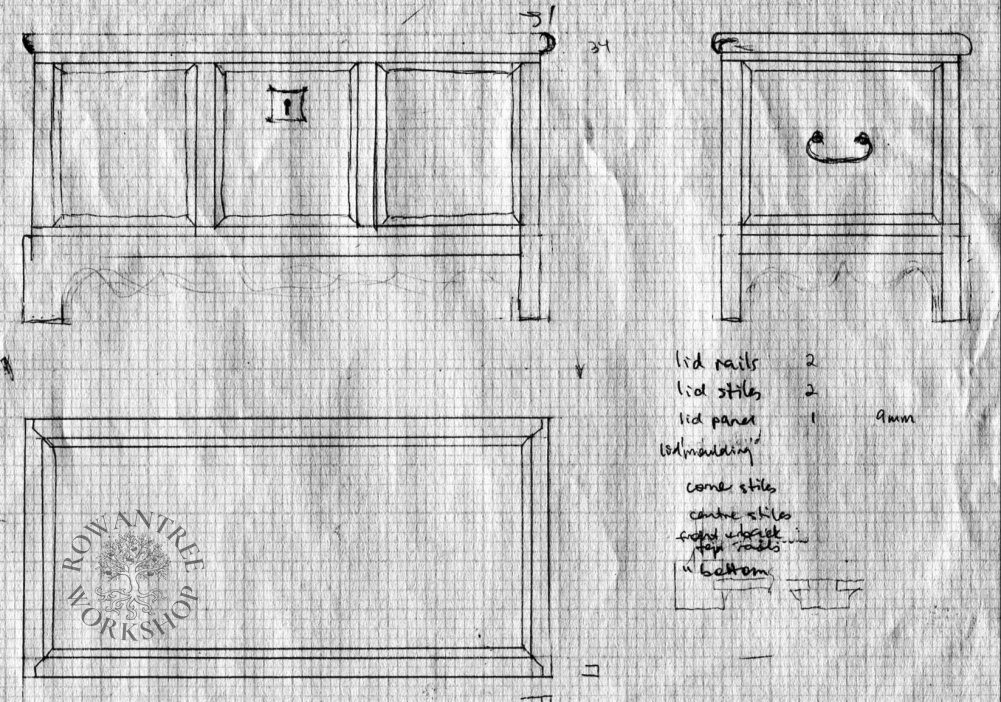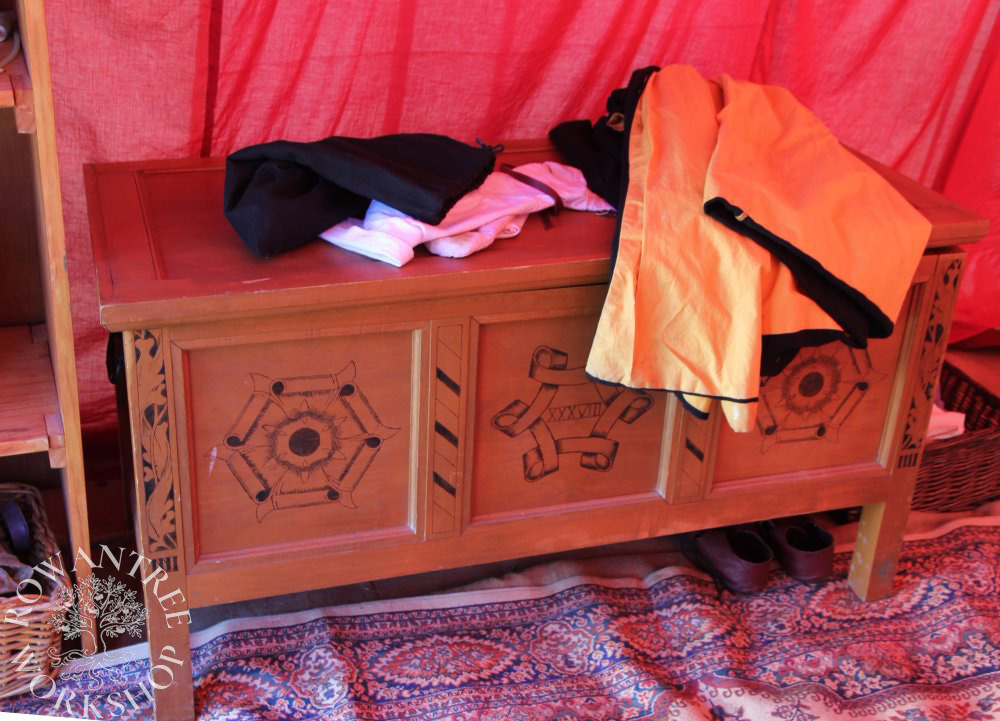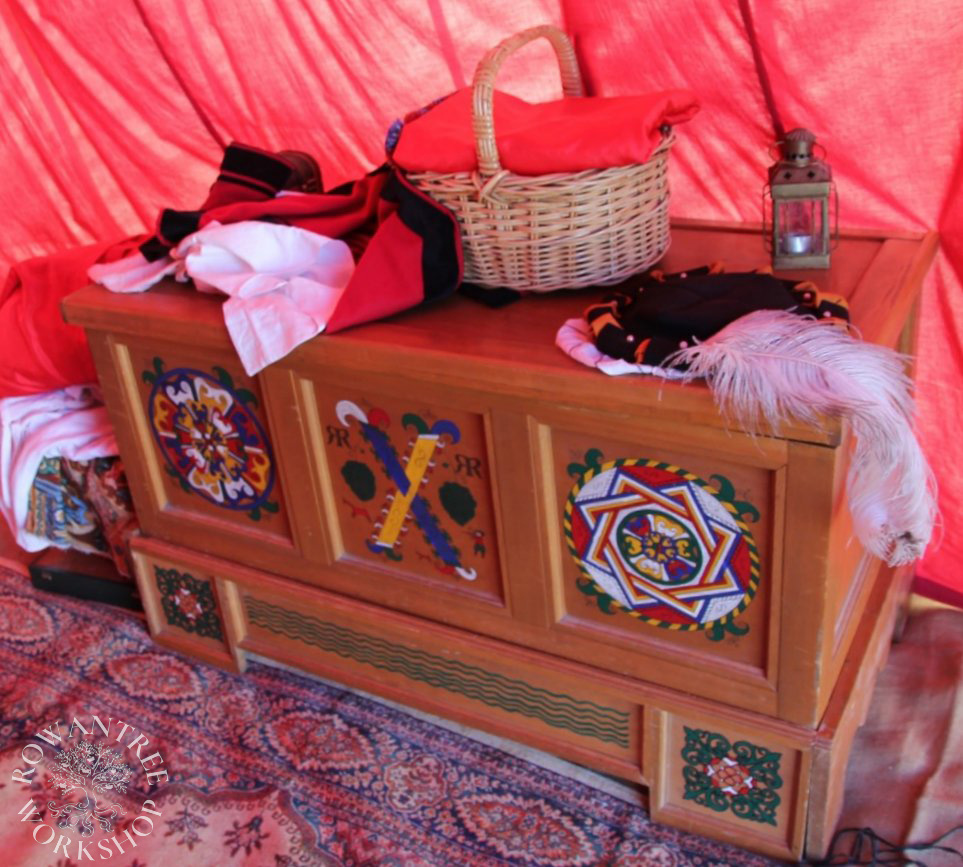A pair of storage chests, based on two extant 16th century Austrian examples.
Once we had built our 16th century tent, we needed suitable storage to go inside it. These chests store our medieval clothes both when camping and at home, where they also act as useful tables around the house.

Research and Design
Chests were the most popular type of medieval and renaissance furniture, providing storage, seating and/or decoration. Most were portable, and could be used to transport goods as well as store them. In Medieval & Renaissance Interiors, Oledzka (2016) notes that over the centuries and across different countries, there were many regional variations in their form, internal structure, decoration and materials.
These pieces were based on two 16th century chests I saw in the Volkskundemuseum in Vienna in 1996. They were in a room with many other chests and it was difficult to get clear pictures. Both chests were constructed with three front panels with central lock, a single panelled top and sides with iron handles for carrying.
The first chest has three different folk style designs painted on the front panels, in bright colours. It is sitting loose on an ornate wooden base, which was also painted.

Photo: Robyn Spencer

Photo: Robyn Spencer
The second chest is unpainted. It has shallow carving on the frame and the panels are decorated with what looks like poker work, with some simple shading. It has a simple flat base.

Photo: Robyn Spencer

Photo: Robyn Spencer
We planned to use the painted chest (minus the base) as a coffee table, so this dictated the height. Based on this, I designed the chests in proportion. At this scale, both chests easily fit in our trailer and can be carried by two people when fully loaded.
We wanted both chests to be off the ground when in use, in case of wet camping. I added simple legs to the design of the plainer chest, as an extension of the frame. The painted chest has a wooden base. I could not get a picture of the sides of this, so I copied the feet from another contemporary chest in the room.
Construction


My husband Nico made the chests using power tools. They are constructed as true panel chests, but are made from plywood rather than broad wooden planks, with a solid wooden frame and partitions. The lids were made as a single framed panel, attached to the base with a pair of solid leaf hinges. The chests were stained before being decorated.
I wanted to copy the decoration on the two chests as closely as possible. I scanned my photos, adjusted for skew and scaled them up to full size, then transferred them to the panels using graphite paper.
I painted the colourful chest using commercial craft paints, copying the colours from the original. The trickiest part was the wavy lines across the front of the base, which had to be done freehand.
For the plainer chest, I burned the linear design into the wood using a pyrograph, then shaded it with dilute paint. I used the same techniques to decorate the framing, in place of the original carving.
I varnished both chests to protect the wood from the inevitable damp. We found commercial handles of suitable design for the ends. My original designs included locks, but we didn’t ever make these. Inside, a chain stops the lid from opening too far.


The chests have stood up well over many years, storing our medieval clothing at camping events, and transporting clothes and bedding. Outside of events, they store medieval clothing and bedding, and act as a coffee table in the living room and a side table in the guest room.
Afterthoughts
If I was decorating these chests again, I would use Egg Tempera, which is what the originals would have been painted with. And we’d use a better quality stain, and oil the wood rather than varnish it.
After many years of tilting cups on the framed top of the ‘coffee table’ chest, my husband replaced the lid – again made as a framed panel, but with a flat top. It’s now finished with a hard burnishing oil, which gives a lovely glow.

